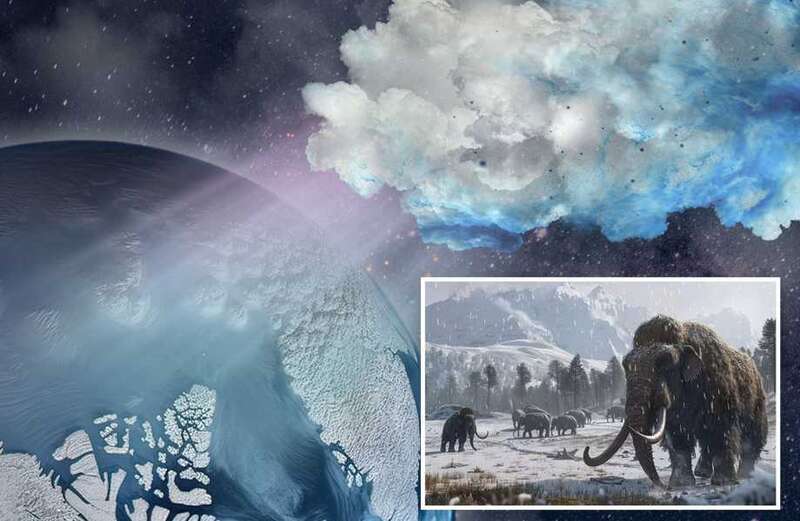SCIENTISTS may have just cracked the mystery behind the multiple ice ages that plunged Earth into a deep freeze for 300million years.
There are a number of theories as to why Earth's climate chilled, such as our planet's tilt and rotation, shifting tectonic plates and volcanic eruptions.


But scientists at the University of Boston say there is evidence a giant cosmic cloud emerged that meant the Sun's warmth couldn't reach Earth.
In a new paper, published in Nature Astronomy, astrophysicist Merav Opher argues that a dense interstellar cloud in the solar system briefly pushed Earth and other planets outside the heliosphere.
The heliosphere is essentially a bubble around all the planets that is filled with charged particles that protect worlds from cosmic radiation.
 Charming UK village is 'UFO hotspot' with 'NASA scientists showing interest'
Charming UK village is 'UFO hotspot' with 'NASA scientists showing interest'
Without it, the Earth's climate could have shifted significantly, according to Opher.
“This paper is the first to quantitatively show there was an encounter between the Sun and something outside of the solar system that would have affected Earth’s climate,” said Opher, an astronomy professor at Boston University and fellow at the Harvard Radcliffe Institute.
“Stars move, and now this paper is showing not only that they move, but they encounter drastic changes.
“But as soon as the Earth was away from the cold cloud, the heliosphere engulfed all the planets, including Earth."
The space cloud could would have exposed Earth to a tsunami of hydrogen and dust, mixed with the iron and plutonium from exploded stars.
It's this increase in space gas and dust that may have tipped Earth into a prolonged Ice Age.
According to the paper, there is geological evidence showing higher levels of iron and plutonium isotopes in Earth's oceans, Antarctic snow, ice cores and on the moon during the same time period.
But once the cloud had move on and Earth slotted back inside the heliosphere, our planet's temperatures normalised.
Only rarely does our cosmic neighborhood beyond the solar system affect life on Earth
Avi Loeb, director of Harvard University’s Institute for Theory and Computation
“Only rarely does our cosmic neighborhood beyond the solar system affect life on Earth,” added Avi Loeb, director of Harvard University’s Institute for Theory and Computation and coauthor on the paper.
 Astronomer leads hunt for Northern Lights 'sound' rarely heard in the aurora
Astronomer leads hunt for Northern Lights 'sound' rarely heard in the aurora
“It is exciting to discover that our passage through dense clouds a few million years ago could have exposed the Earth to a much larger flux of cosmic rays and hydrogen atoms.
"Our results open a new window into the relationship between the evolution of life on Earth and our cosmic neighborhood.”
While it's impossible to say for sure whether the interstellar cloud actually triggered Earth's Ice Age, researchers will continue to investigate the effect of clouds on Earth.

































